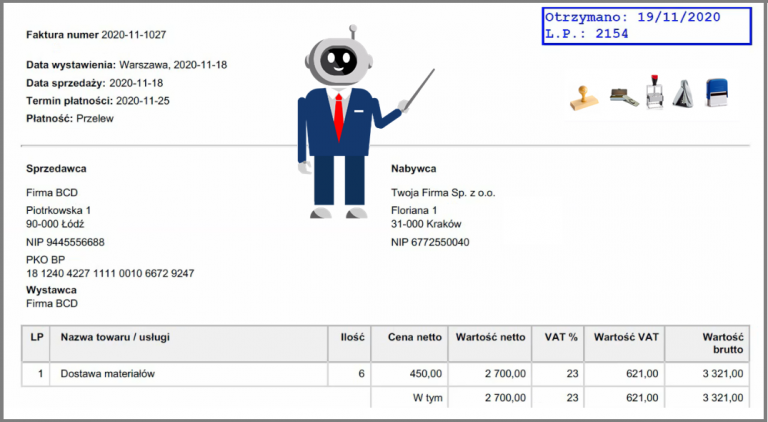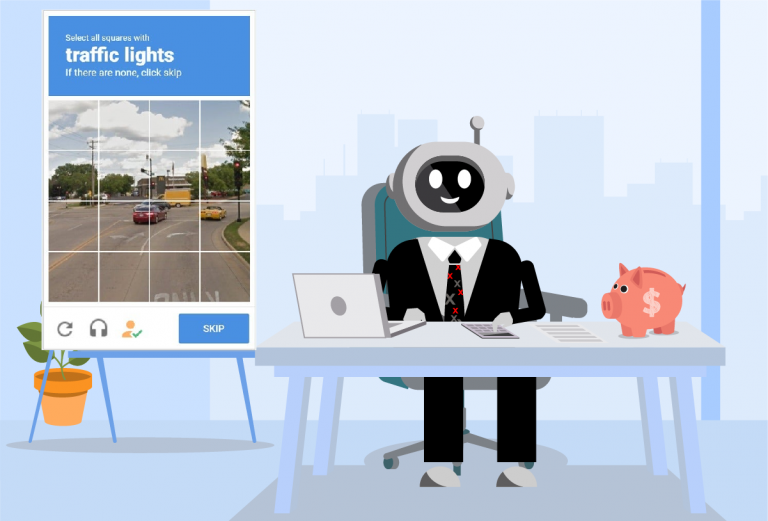12th May 2021

As you know from the first episodes, I’m quite unusual. When I started working for XELTO DIGITAL I was a normal robot. The colleagues from my team taught me more and more interesting things every day, so I could help our customers in their daily tasks. One day, She appeared … From that moment on, I decided to be not only useful, but also more courteous. A short conversation with Monika and Kamil was enough to teach me the additional rules of savoir-vivre…
With the Expert’s eye:
In our team, we assume that communication between a robot and our customer in the automation process is not a minor detail. For the purpose of this article, by ‘communication’ I mean all the information and messages that the processing robot sends to the operator or user of the customer by e-mails. These can be error messages, reports, or action completion information. Any information sent by a robot to a person can be either cold or, as the name suggests, automatic in reception, or sympathetic and, colloquially speaking, ‘human’. From our experience with customers, we have reached the conclusion that: the customer expects the robot to be simply courteous in communication.
What does this mean for us who design robots?
Let’s remember that there is a person on the other side and they are pleased to receive a message starting with: “Dear User” or “Please be advised that”. After all, if our customers treat the robot as a virtual employee or a colleague, it is understandable that this approach is translated into the language of communication, just as it is between employees who like each other.
Can a robot speak any language?
The robot should also be a polyglot to the extent that every user receives messages from him in their native language. It might look like a small thing, but it really works. Emails sent in English, which is invariably associated with computer language, are perceived as cold and too official. Saying this, I do not have in mind the customer’s ability to understand English. Simply, information in your native language (English customers are out of this competition) is simply more accessible. We already know that building such a communication does not require much effort. And to prove that it is worth doing so, let us give you an example of some feedback we received from one of our customers: „The robot is very polite in its messages :).”
Electronic correspondence:
The most common tool used by a robot for any communication is an email, which covers all the needs in this respect for most processes. We can inform the user that the robot has started or finished a process by email. We can send information about system or business errors, send a final report or a notification of any event that occurred during the process.Technically, the robot can send an email using the mail client application installed on the workstation. This method allows us to use corporate mail without needing to have, store and, in consequence, update the mailbox login data. In addition to using the client, the robot may connect to the mail server using SMTP, POP3 or IMAP, or, for a mail provided by larger vendors, it may connect via dedicated services such as GSuite, and Microsoft Exchange Server.
Not just email communication:
However, it should be borne in mind that although email is the basic and most popular form of communication, robots have more possibilities at their disposal. For processes whose characteristics force us to react quickly or to have more interactions with the user, it may also be useful to use instant messengers, such as MS Teams, Skype, SameTime etc., for communication. A poor substitute for communication between a robot and a person can also be a robot workflow report left in the appropriate location on the network drive, which can be a good solution if you want to avoid spam or if you do not have the right tools available.
Authors:
Monika Stawicka – Business Analyst
Kamil Gawlista – RPA Developer
5th May 2021

Today, I would like to show how we can “affix a virtual stamp” in the 21st century. The origins of sealing date back to the ancient times. In ancient Greece and Rome, they were used to secure correspondence and certify the authenticity of a will. Over the centuries, the function and the method of using a stamp itself have evolved. And paraphrasing the title of one of my favourite films, ‘Diamonds are forever’, I will say that stamps are also like this.
Together with Kamil, I would like to tell you about one of our ready-made tools, that is STAMPER, which helps our customers:
With the Expert’s eye:
Files with the PDF extension have dominated the IT world, and anyone with at least minimal contact with a PC has certainly come across them. With their advantages, PDFs have become the dominant file format with which we publish text and graphic information for a wider group of recipients. These files are also an integral part of many company and corporate processes in which documents, price lists, brochures, and many more items are published.
The lack of easy editing capabilities, which is an immanent feature of PDFs, is, on the one hand, a major advantage that keeps these files in a predefined layout regardless of the application in which they are opened, but it may also be a disadvantage when, for example, you want to quickly edit or provide a legend for the PDF contents. The most popular applications to view this type of files do not offer such features at all, or offer them to a very limited extent.
Fortunately, in 1996, Adobe Systems created a solution which partially responds to our needs. FDF files, which are simple text files, can be imported into the PDF to create an additional layer of easily editable objects.
At XELTO DIGITAL, we went a step further and prepared a solution that combines robotics and the capabilities of the FDF format. We created a product called STAMPER. It is a tool for sealing PDFs that can work independently, or it can be inserted into a larger process during which we would like the PDFs being processed to be appropriately marked. The stamps created by STAMPER are highly flexible. In addition to their contents, we can freely edit the attributes such as document coordinates, text size, font, colour, border, background, orientation.
With our solution, you can add extra information before printing an invoice, or mark the processed documents with an appropriate note. Using the STAMPER as part of the automation of office work opens up a lot of possibilities and makes it possible to clearly mark PDF files.
Author: Kamil Gawlista – RPA Developer
28th April 2021

I’m Robotowsky… Edward Robotowsky. I know, it sounds like a story about the famous Agent 007. But I can tell you that my adventures are just as intriguing as those of the main character in Ian Fleming’s novel. In addition, I am a huge fan of James Bond and I love technological innovations like he does. We also have another common secret, but more about that another time. Well, let’s start from the beginning.
In the coming weeks, I’d like to take you into the fascinating world of automation that I have become boundlessly absorbed in. I could tell you about all the innovations and possibilities offered by automating processes endlessly. Thanks to working with the XELTO DIGITAL team, I can draw knowledge from our experts on an ongoing basis and share it with you in my blog:
With the Expert’s eye:
Does a robot saying “I’m not a robot” depart from the truth? Working with Web sites and Web applications is one of the basic things that robots have to cope with in their everyday work. But what if we have an ideal candidate: a simple, structured process with digital inputs, and the famous “I’m not a robot” prevents us from reaching our goal? Fortunately, it is not the end of the world (nor our project), because we have several options.
First of all, especially if we are working on an internal application, we can contact the administrator to request a version of the site without reCAPTCHA.
Typically, though more often than not we will have to deal with this issue ourselves. At present, we can use machine learning solutions which are either free or do not cost very much. Let me pass over the paid ones, as a lot of them can be found on the Internet, and the rules of their operation will be best introduced by their vendors. However, before you use them, test the Buster plug-in: Captcha Solver for Humans. It is available as an add-on to both Chrome and Firefox.
How does it work?
The plug-in adds a new button to the reCAPTCHA window. Clicking it will activate the audio version of reCAPTCHA, listen to it furtively, and then enter the correct solution to the task. I should add that this is a button that our robot can click without any problems!
What does it look like?
When our robot activates reCAPTCHA, there are two options. The best solution for us is when the mechanism will simply let us pass. But if not, we will see a well-known window with images. After the installation of the plug-in, a third orange guy button appears, which is just our solution. When the robot presses this button, the automatic task solution is activated. The only thing that remains now is to properly build up the developed procedure to monitor the reCAPTCHA behaviour.
Is this an ideal solution?
No. With a large number of logins, reCAPTCHA, we will treat us as an attack on the site and block any attempts to connect to it. In addition, while working on the active screen is very good in both Chrome and Firefox, moving it to a virtual machine makes communication difficult. My experience has shown that this task is better handled by Firefox using the ‘send window message’, preferably in version 64, because there is an error causing the plug-in to fail to respond in later versions (fortunately, restarting the browser should resolve this). Nevertheless, this method should help to overcome this problem in the process automation.